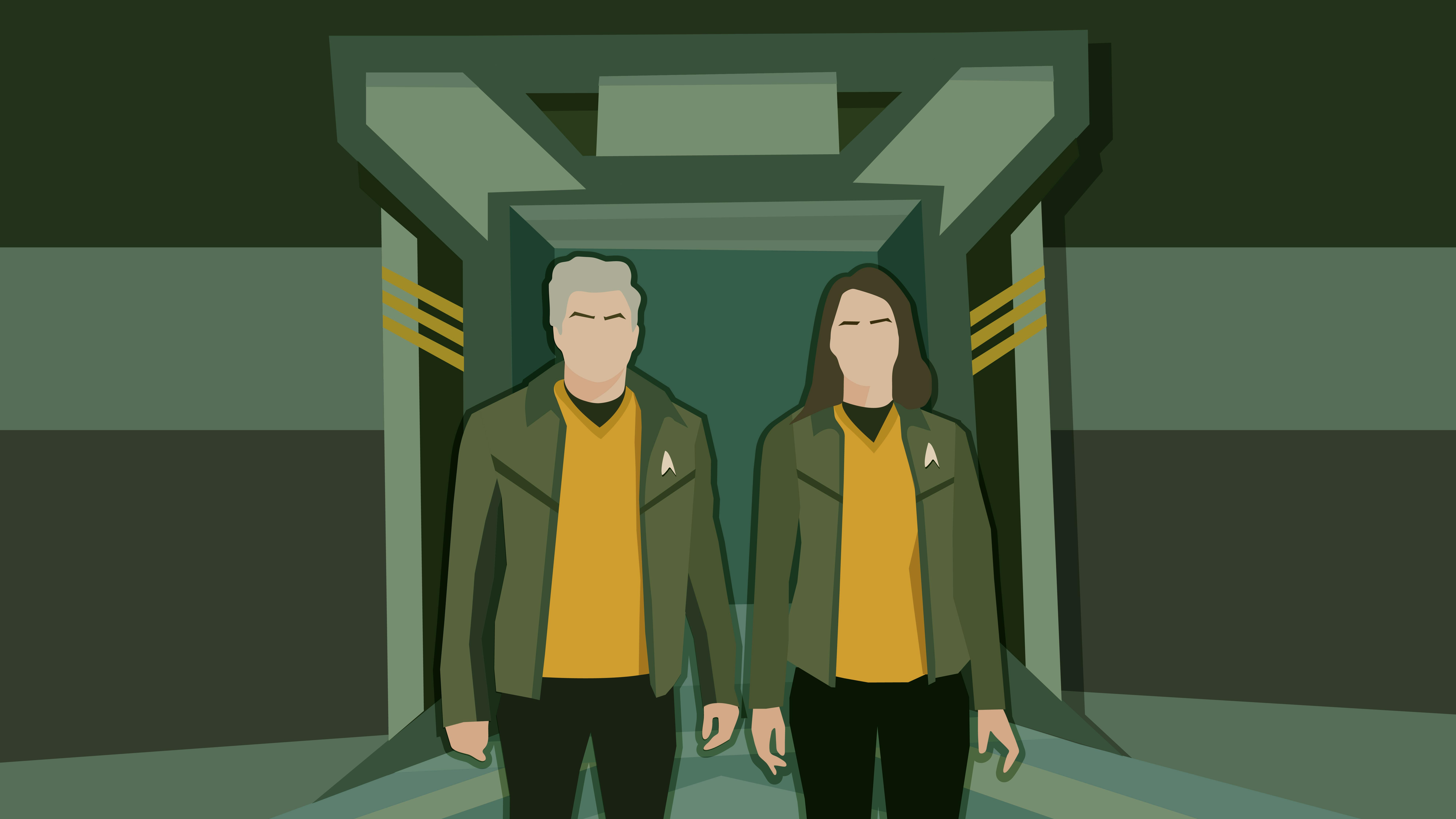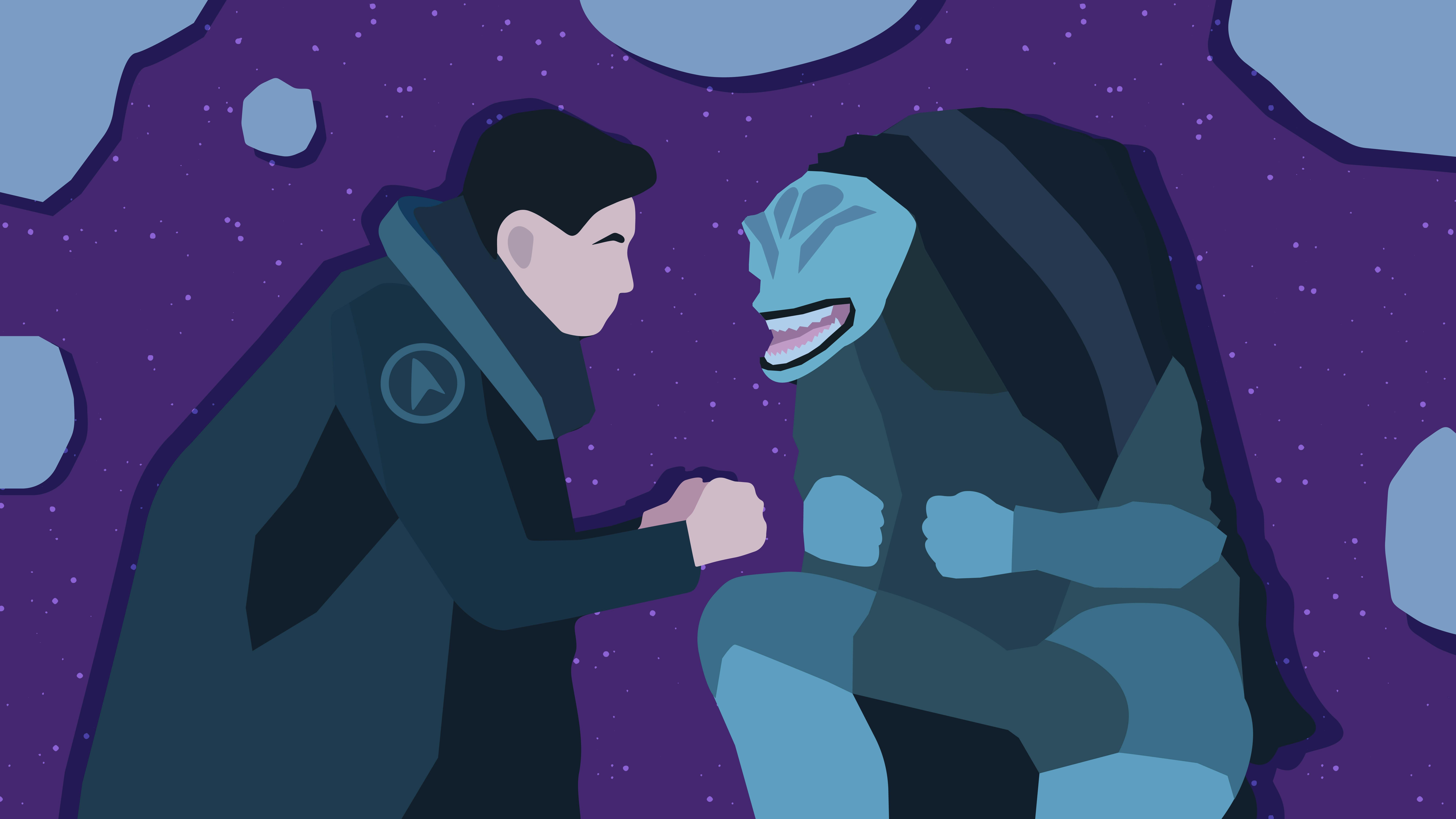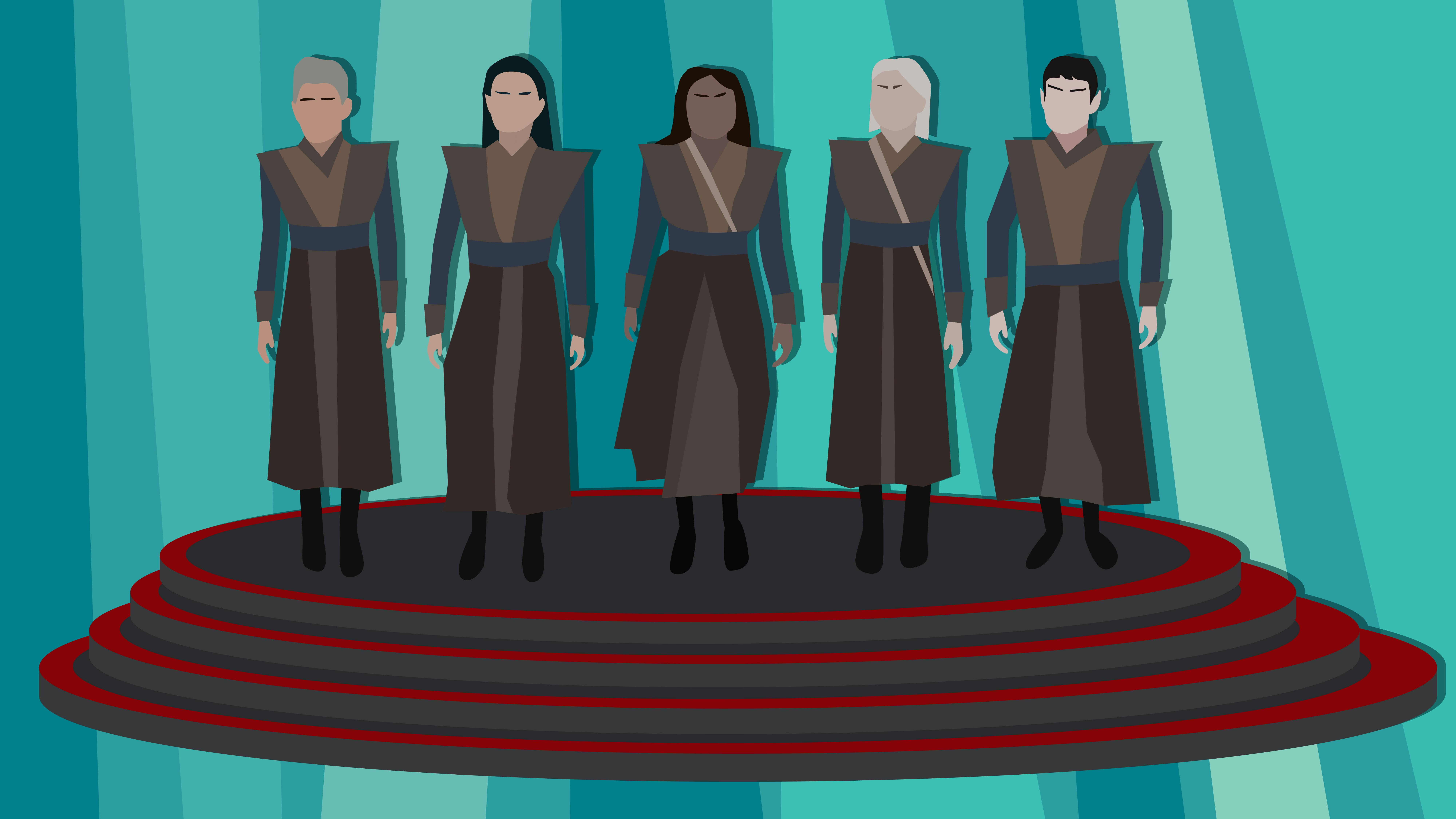Published Jan 16, 2025
Star Trek: Voyager's 'Caretaker': Original Script vs. Finished Pilot
For the 30th anniversary of the series, we're looking at how co-creators Michael Piller and Jeri Taylor evolved the pilot.
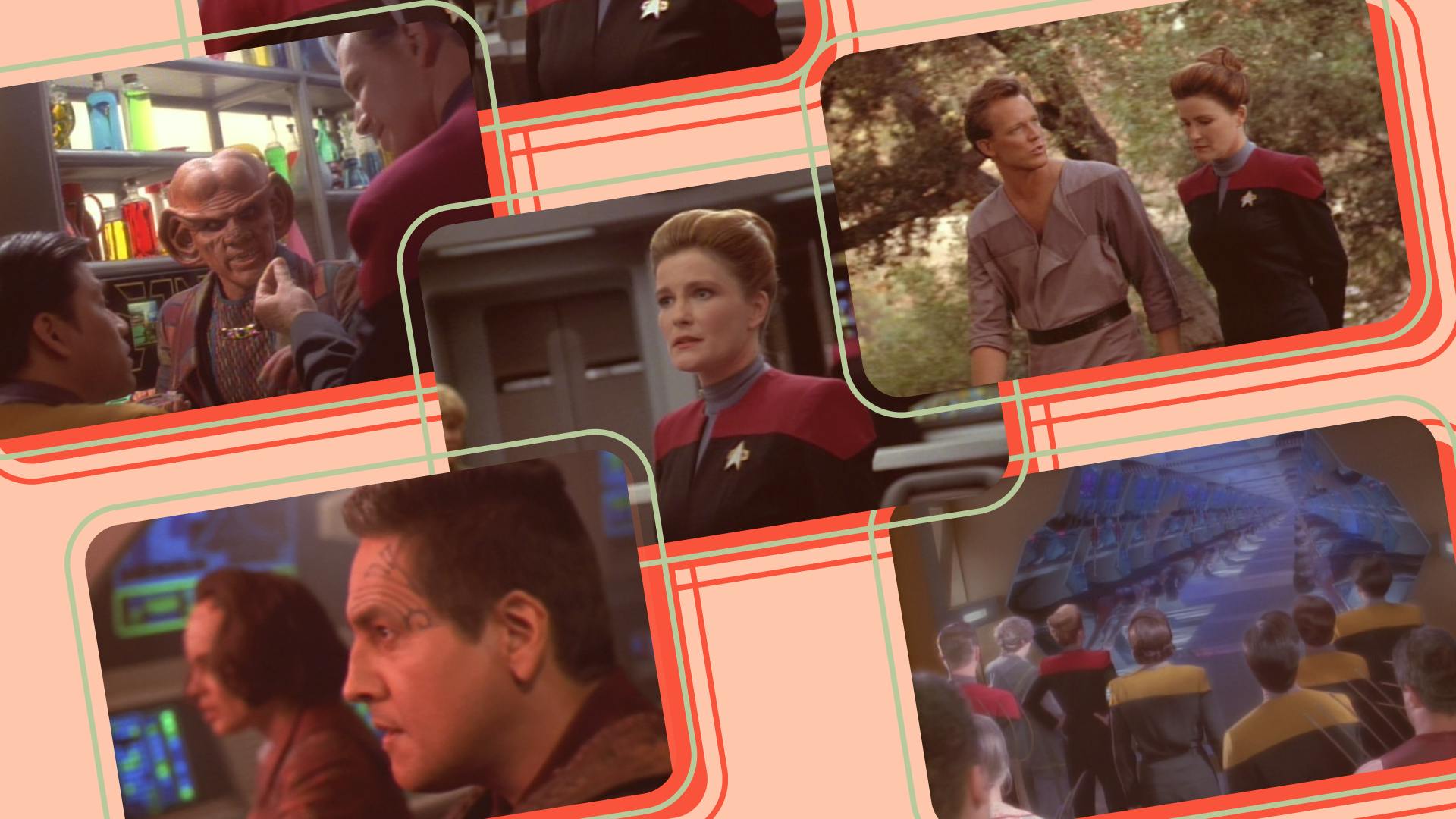
StarTrek.com
Two of Star Trek's most important creative talents were Michael Piller (co-creator of Star Trek: Deep Space Nine and Star Trek: Voyager) and Jeri Taylor (co-creator of Voyager). Both talented writers and showrunners brought character-focused storytelling and humanity to the adventures of Captains Picard, Sisko, and Janeway.
Piller and Taylor wrote the June 8, 1994, first draft teleplay for the "" pilot episode of from a story and premise created by them and Rick Berman. While researching the making of "Caretaker," we discovered some fascinating differences between the episode that would ultimately premiere January 16, 1995, and the original conceptions as detailed in this version of the script.
Star Trek: Voyager - The Journey
These differences include Chakotay having followed — and admired — the career of Captain ELIZABETH Janeway (the name would be changed to 'Nicole' and then finally 'Kathryn' in subsequent drafts and after casting changes) before his joining the . While edited from the TV version shown to the audience, this information could have helped explain why Chakotay trusts Janeway in the pilot episode rather quickly. Another interesting name difference is that the were originally called the 'Gazon.'
However, one of our favorite differences between the first draft script and the final version shown on television is an extension of the scene where Janeway meets Tom Paris at the penal colony, seeking his help in exchange for consideration of his sentence there.
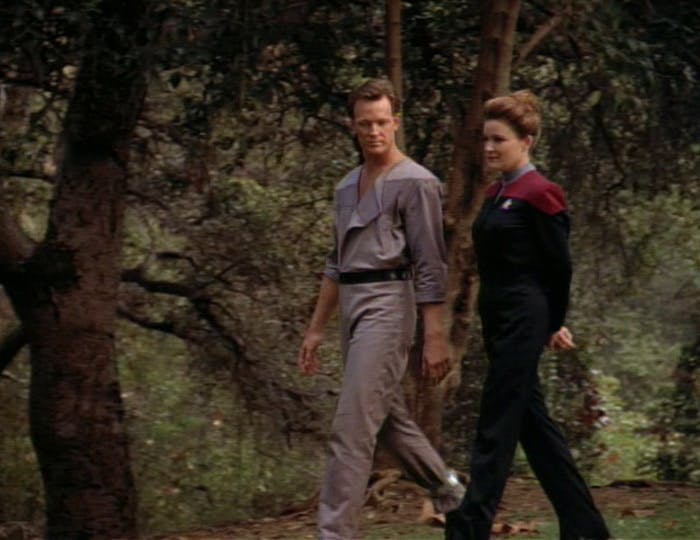
"Caretaker"
StarTrek.com
As originally designed, Janeway and Paris would have eventually had their conversation over a meal of hotdogs in a park. Janeway orders hers from the "vendor replimat" with "Keladan leeks" and "capsicum relish," while Paris says, "I'm a purist. Just mustard."
While a small moment, it would have been an early and immediate revelation of Tom's fascination with the "ancient" past (a constant character trait he displayed during the run of the series, whether through his love of cars, television shows, and 3D movies, his navigation of 1990s Los Angeles during time traveling adventures, or his fascination with Captain Proton).
Even more interesting was that Paris spends time trying to charm Janeway romantically, revealing an almost Han Solo-like quality to the character. He is even introduced shirtless as the scene begins to reinforce his romantic character traits.
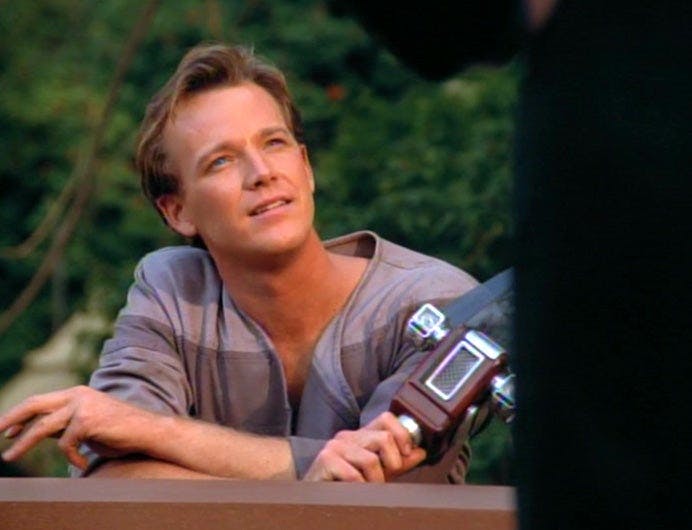
"Caretaker"
StarTrek.com
The script notes that "He’s using his roguish charm to try and impress her and it almost seems like he's coming on to her with his soft eyes and tone of voice. For much of the scene, it almost seems to be working. Now, she takes a beat and moves an inch toward and speaks softly —"
JANEWAY
If a member of my crew gets hurt because you make
a mistake, you won't have to worry about an anklet,
Mister. I'll make sure you don’t see daylight again.
This interesting exchange would have reinforced the strength and intelligence of Janeway, never to be fooled by Tom's attempts at charming her, while also setting up Paris as both an aficionado of traditional popular culture and his need for redemption as a rogue hero.
What is also revealing about this lost extension of the "Janeway meets Paris" scene is that it illuminates how adept Piller and Taylor were at weaving character moments into their scripts. Indeed, one of the reasons that Voyager continues to inspire fans and new audiences is its excellent characters and relationships. Piller and Taylor used character effectively, even in the earliest drafts of their work. It is a legacy that would endure for the next seven years as other writers expanded on their original framework.

